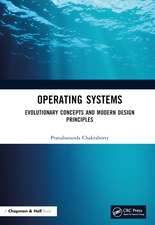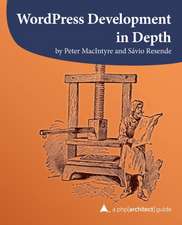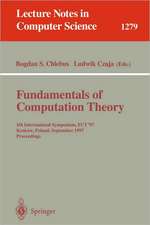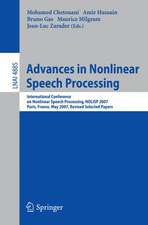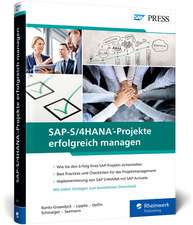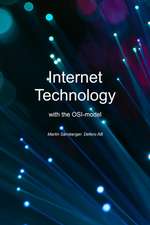Computer Organisation and Architecture: Evolutionary Concepts, Principles, and Designs
Autor Pranabananda Chakrabortyen Limba Engleză Hardback – 29 oct 2020
Key Features
- Microprocessor evolutions and their chronological improvements with illustrations taken from Intel, Motorola, and other leading families
- Multicore concept and subsequent multicore processors, a new standard in processor design
- Cluster architecture, a vibrant organizational and architectural development in building up massively distributed/parallel systems
- InfiniBand, a high-speed link for use in cluster system architecture providing a single-system image
- FireWire, a high-speed serial bus used for both isochronous real-time data transfer and asynchronous applications, especially needed in multimedia and mobile phones
- Evolution of embedded systems and their specific characteristics
- Real-time systems and their major design issues in brief
- Improved main memory technologies with their recent releases of DDR2, DDR3, Rambus DRAM, and Cache DRAM, widely used in all types of modern systems, including large clusters and high-end servers
- DVD optical disks and flash drives (pen drives)
- RAID, a common approach to configuring multiple-disk arrangements used in large server-based systems
- A good number of problems along with their solutions on different topics after their delivery
- Exhaustive material with respective figures related to the entire text to illustrate many of the computer design, organization, and architecture issues with examples are available online at http://crcpress.com/9780367255732
This book serves as a textbook for graduate-level courses for computer science engineering, information technology, electrical engineering, electronics engineering, computer science, BCA, MCA, and other similar courses.
Preț: 1582.34 lei
Preț vechi: 1977.93 lei
-20% Nou
Puncte Express: 2374
Preț estimativ în valută:
302.82€ • 314.98$ • 249.99£
302.82€ • 314.98$ • 249.99£
Carte tipărită la comandă
Livrare economică 15-29 aprilie
Preluare comenzi: 021 569.72.76
Specificații
ISBN-13: 9780367255732
ISBN-10: 0367255731
Pagini: 588
Ilustrații: 8 Tables, black and white; 200 Illustrations, black and white
Dimensiuni: 178 x 254 x 38 mm
Greutate: 1.13 kg
Ediția:1
Editura: CRC Press
Colecția Chapman and Hall/CRC
ISBN-10: 0367255731
Pagini: 588
Ilustrații: 8 Tables, black and white; 200 Illustrations, black and white
Dimensiuni: 178 x 254 x 38 mm
Greutate: 1.13 kg
Ediția:1
Editura: CRC Press
Colecția Chapman and Hall/CRC
Public țintă
Postgraduate, Professional, and UndergraduateCuprins
Preface. Acknowledgements. Author. Part I Fundamental Computer Organisation. 1 Computer and Its Environment. 2 Computer System Organisation. 3 Processor Basics – Structure and Function. 4 Memory Organisation. 5 Input–Output Organisation. 6 Control Unit: Design and Operation. 7 Arithmetic and Logic Unit Organisation. Part II High-End Processor Organisation. 8 Pipeline Architecture. 9 RISC Architecture. 10 Parallel Architectures. Additional Reading. Suggested Websites. Index.
Notă biografică
Pranabanadna Chakraborty is Senior Visiting Professor at the Government Engineering College, Kolkata, West Bengal, India. He is also a guest faculty at BITS Pilani, India. He has strong diversified experience in Information Technology Industry for over 40 years covering System Analysis & Design and implementation of System Software (like Operating systems, Compiler deign) for various types of large Mainframe Computing Systems with the giant Multinationals, Re–engineering, Project Monitoring & Management including Banking System / Insurance Systems / State–based Academic Examination Processing system / Production Planning / Survey & Demographic Census (Govt. of India) / Different areas in Postal systems, Ministry of Posts, Govt. of India / Staff selection systems, Govt. of India, and many other real–time projects in India and abroad.
Descriere
This book provides a reasonable balance between the theoretical concepts of computer organization and its practical implementation. It describes successful solution approaches in the form of abstract and real models as well as the related algorithms.



